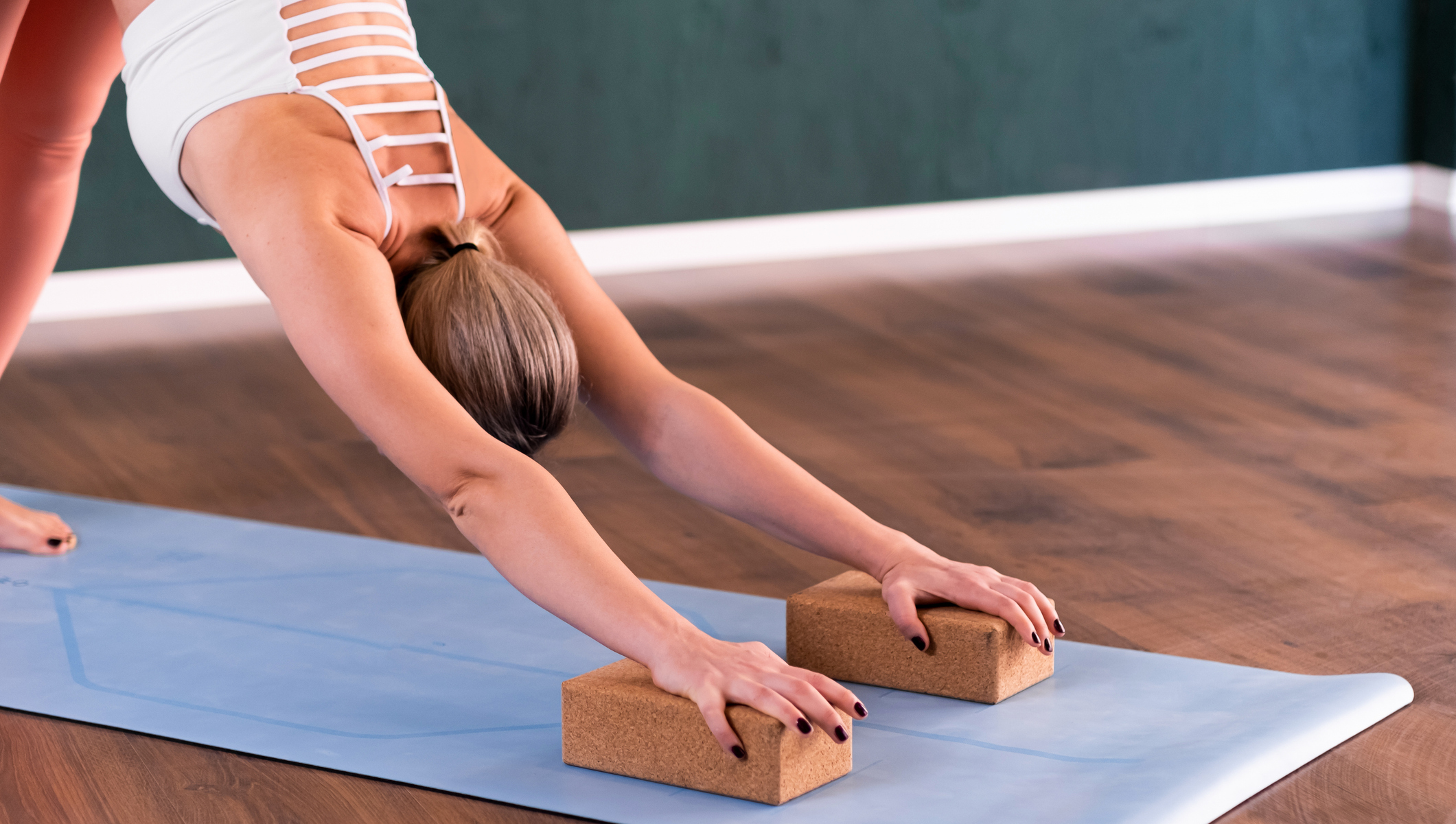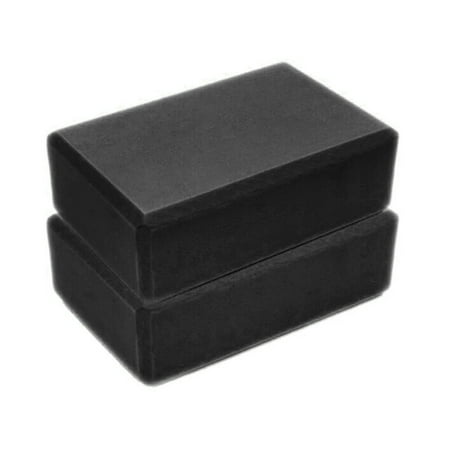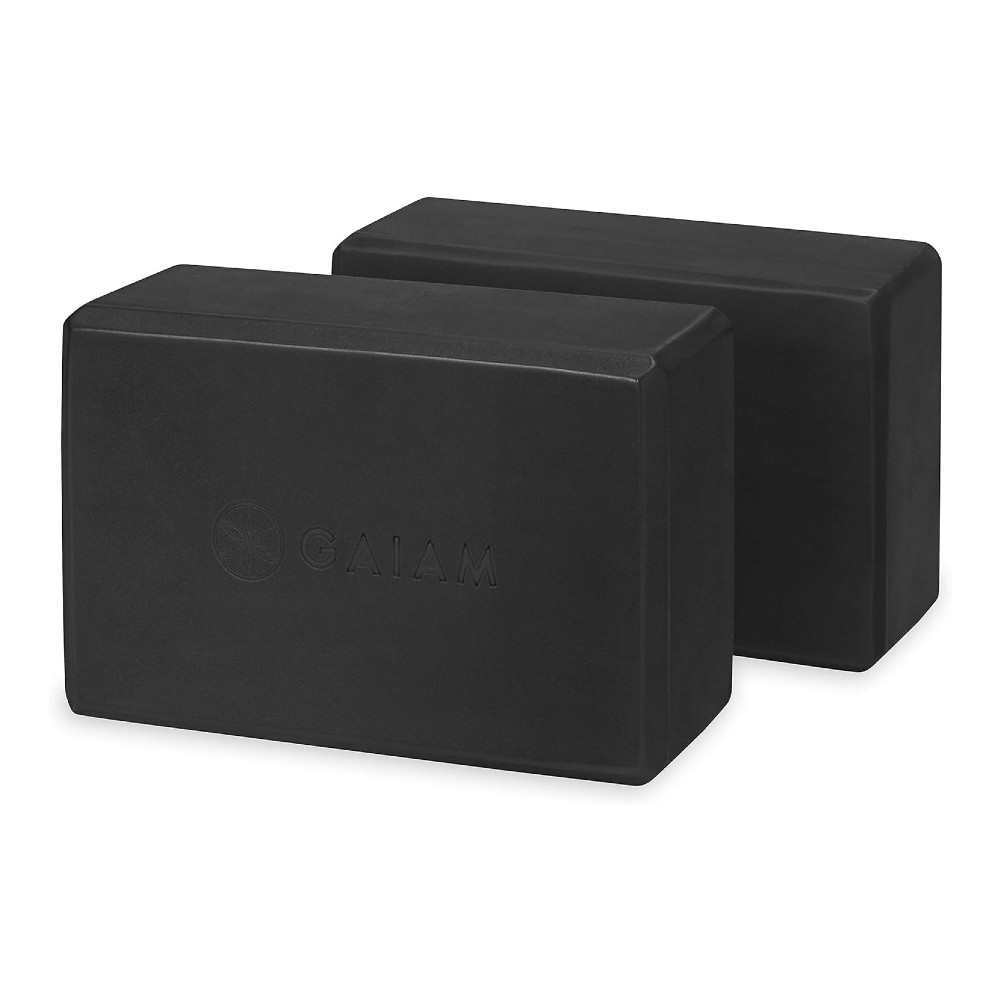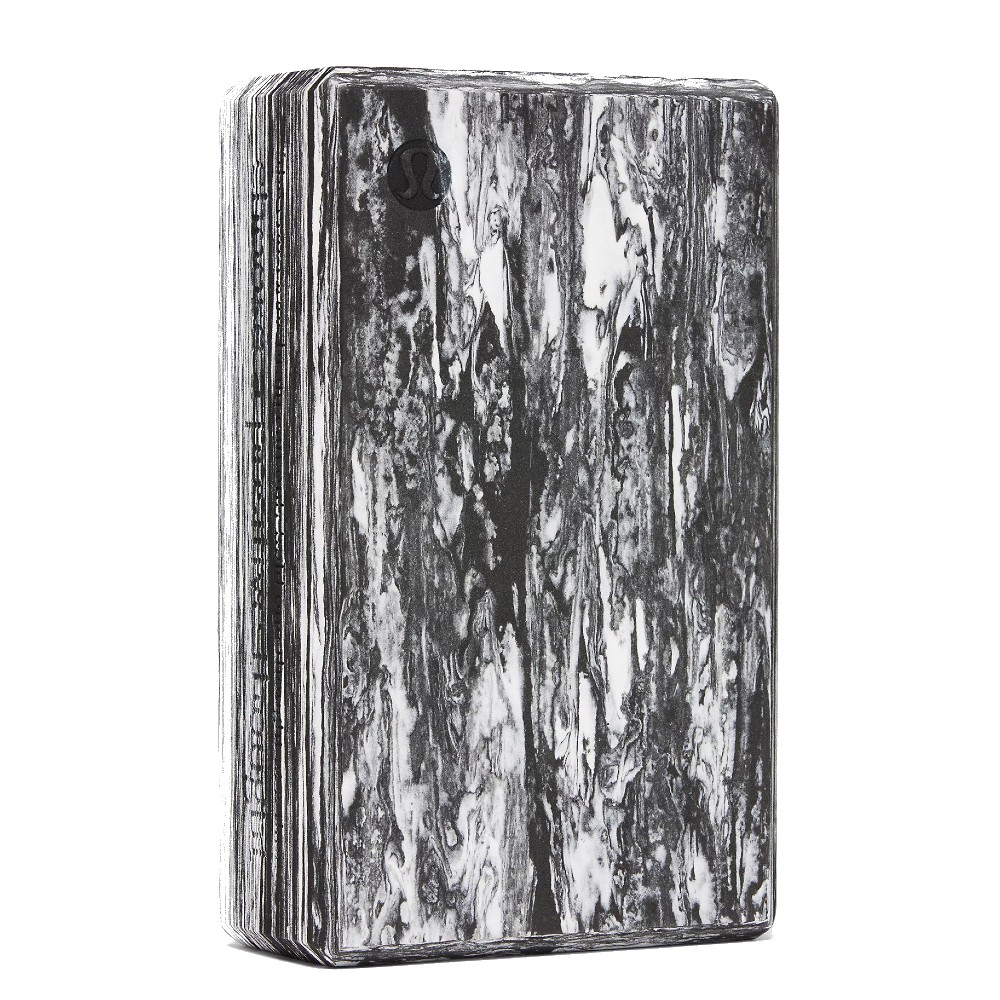
Probably the best-known yoga pose of all, downward-facing dog, also known as downward dog or down dog, has many benefits. It strengthens and stretches the body in equal measure. Managing to be both an active and a resting position, it’s a cornerstone of almost any yoga practice, so it’s worth getting it right.
I got the chance to speak to Nicole Wood, master trainer at YogaSix, so I asked how we can adjust how we approach the pose to get the most out of it. She also told me what mistake she sees people make the most often in downward-facing dog and how to correct this.
"My top tip would be to place blocks under your palms on the lowest setting to help improve your alignment in down dog," says Wood.
Shop yoga blocks

Just $1 for one!

Amazon's best-selling yoga blocks.

A stylish upgrade.
"Often I see students dumping their weight into their shoulders which creates a crunch in the neck and a curve through their upper back, instead of finding a long neutral spine," says Wood. "To help support the shoulder joints, students can also move their feet wider than their hips, which will then help with their alignment and pull the weight out of their shoulders."
"Driving through the heels of the palms and spreading the fingers wide will help you find better alignment in down dog," says Wood. It’s not a good idea to press your knuckles down into the mat though—that won’t help you. "If students send their weight into their knuckles their shoulders will shrug up into their ears and bring them out of alignment," says Wood.
There’s a common belief that the aim of downward dog is to get your heels down onto the mat, but that’s a myth. "It does not matter if your heels can touch the earth in down dog! Depending on the anatomy of a student's body, they may never get their heels to the earth," says Wood.
How to do downward-facing dog
Video credit: PeopleImages / Creatas Video+ / Getty Images Plus
- Begin on all fours, with your hands slightly in front of your shoulders and your knees directly under your hips.
- Tuck your toes under, exhale as you move your hips up and back so your body forms an inverted V-shape, keeping a slight bend in your knees.
- Press your shoulders away from your hands and ensure your spine is straight—bend your knees more if necessary, especially if you have tight hamstrings.
- Relax your head and neck, looking between your feet.
- Spread your fingers and press down through the heel of your palm.
- Pedal your feet, pressing one heel towards the floor, then the other—this is known as walking your dog.
- Completely straighten your legs and let your heels sink towards the mat if you can.
- Take five slow breaths here.
- Bring your knees back down to the mat to come out of the pose.
If holding the static pose doesn’t feel good, keep the legs moving, or like Wood suggests, try putting your hands on blocks to improve your alignment.
Benefits of downward-facing dog
When done correctly down dog eases tension in the neck and back, and has a stress-relieving capacity.
Downward dog stretches the back of the legs including the hamstrings, calves and Achilles tendons, which can feel great. And because it’s a weight-bearing pose, it strengthens the upper body including the arms and shoulders. It also requires some activation of the core.
Being an inverted pose, in which your heart is above your head, downward dog stimulates blood flow. It can also improve your posture by opening up the chest and shoulders, and lengthening the spine.







